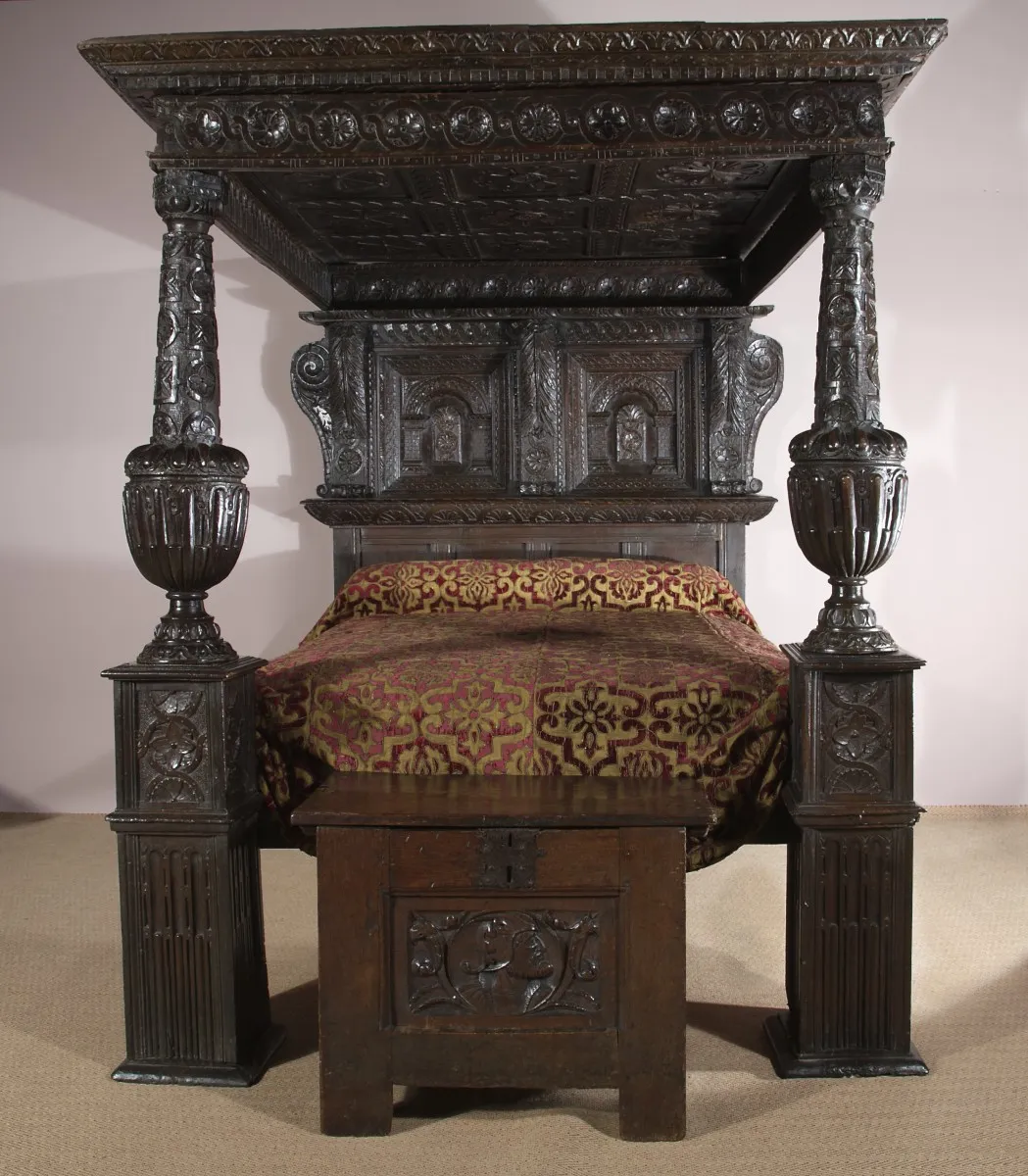Like the rest of the country, we have to admit to being hooked on the BBC’s most recent historical offering, the adaptation of Hilary Mantel’s Tudor epic Wolf Hall.
The sets display the opulent interiors of some of the country’s oldest stately homes including Great Chalfield Manor, Montacute House and Lacock Abbey (also famed for providing a backdrop to the Harry Potter films).
With three episodes left in the series, we seek out three exemplary pieces from specialists in Tudor antiques and discover some unusual histories...
Standing salt from Mayflower Antiques

"In Tudor England Venetian glass was highly prized, and expensive. Henry VIII’s inventory of 1547 notes 600 pieces of Venetian glass, including enamelled and gilded examples like this standing salt. Salt had a special place at the table; the master salt would be circulated, and each guest would have their own salt.
We are very proud to have a silver gilt salt from the English Renaissance in our collection. It was made c1550. The central rock crystal tube contains a gilt figure of Longinus, the Roman soldier who, legend has it, pierced Christ in the side when he was on the cross.
The rock crystal was almost certainly recycled from an earlier Catholic reliquary, which were broken up during The Reformation. Surviving examples of these ‘architectural salts’ are extremely rare."
Elizabethan Tester Bed from Paul Beedham

"The great tester bed is probably the ultimate status piece in the Elizabethan home. It was the single most costly piece of furniture in Tudor and Elizabethan households and was designed to show off the owner’s wealth and status, both as a vehicle to display exotic and expensive fabrics and as an elaborate structure in itself.
They are often known as ‘four poster’ beds which, in many instances, is a misnomer. The bulk of 16th century beds that we see are full tester beds – they have a rigid wooden canopy supported on a solid fixed, decorated headboard, with front supporting posts.
Oddly, they were not only used for sleeping in. On the contrary they were a piece of 'state furniture' to receive important guests and visitors from, in a reception chamber not a bedroom, further emphasising the owner's wealth and status.
The tester bed shown here is from a prominent city of Exeter workshop and is recorded in the early 20th century as being in situ at Godolphin House in Cornwall, an important Tudor and Renaissance property built by the Duke of Leeds."
Late 16th century Flemish tapestry panel from Peta Smyth Antique Textiles

"During the Renaissance textiles were ranked among the most valuable items to be commissioned and possessed, esteemed by royalty, the nobility and the Church as symbols of luxury, status and wealth.
Rich houses were dominated by textile furnishings - fine embroideries, velvets, brocades and damasks consisting of silk and precious metal threads. They decorated both people, as in portraits by Holbein and the like, and their interiors.
Tapestries permitted magnificent and large-scale displays while remaining a portable means of interior decoration. Their creation involved teams of skilled weavers working at a rate, depending on the fineness of the weave and materials, of between one square yard and less than half a square yard per month.
The resulting hangings had a wide range of subject matter: episodes from history, mythology and religion; nature, whether factual or fantastic; and scenes of rustic or, as in this case, aristocratic life."
Find further information about these dealers and other specialists via LAPADA, The Association of Art & Antiques Dealers. 020 7823 3511; lapada.org
Wolf Hall continues this Wednesday at 9pm on BBC Two
